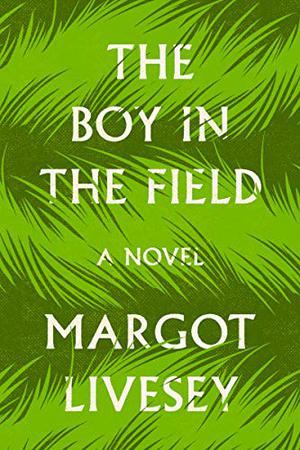Book Review: “The Boy in the Field” — A Brilliant Coming-of-Age Fable
By Landry Harlan
The Boy in the Field is the latest novel from Margot Livesey, a prolific writer with a keen eye for the interiority of her characters, a skill that enriches her novels with a rare intimacy and immediacy.
The Boy in the Field, by Margot Livesey. Harper Collins, 272 pages, $26.99.

It begins, as so many mysteries do, with the discovery of a body. It belongs to a teenage boy, beaten and bloodied but still breathing, lying supine like an “illustration in a Victorian novel” under an oak tree in the middle of a field. He’s stumbled upon by three siblings walking home from school in a sleepy town just outside Oxford, England. The police arrive and an investigation begins. Yet, though it opens with the aftermath of a crime, The Boy in the Field is no derivative procedural with hardboiled detectives and twisty conspiracies. Refreshingly, it’s a coming-of-age fable, far more concerned with probing how the shocking discovery alters the three young witnesses, and is all the richer for it.
The Boy in the Field is the latest novel from Margot Livesey, a prolific writer with a keen eye for the interiority of her characters, a skill that enriches her novels with a rare intimacy and immediacy. In lesser hands, this volume would devolve into another tired tale of adolescence featuring your typical lovelorn teens figuring out who they want to become when they grow up. These tropes make an appearance, but Livesey deftly tweaks them to reflect how a shared traumatic experience ripples into the lives of the three protagonists — each a distinct and beautifully rendered character.
Matthew — the oldest and an avid crime novel reader — is enthralled by the experience of having “encountered something extraordinary … with a victim and a villain” and quickly sets off on his own search for clues. He obsesses over what the attacker’s motivations may have been and teams up with the brother of Karel (the eponymous “boy in the field”) to track down the culprit. Zoe — the middle child with a “gift for finding things” — has other concerns, mainly the attentions of the opposite sex. Still, she wonders if someone stalked Karel before striking him; she begins to see potential stalkers wherever she goes. Zoe even becomes a snoop herself, obsessively following and then having an affair with an older American philosopher who lives nearby.
Each sibling encounters this loss of innocence — ”the idea that everyone was lying some of the time”— but it is 13-year-old Duncan who feels it most acutely. Adopted as an infant, his sensitive and observant demeanor makes him a skilled painter and close confidante of Zoe. One night, soon after discovering Karel, he dreams of finding someone else, a woman whose “skin was dark, like his” waiting for him in the garden. This vision compels him to search for his birth mother, a journey — if a tad rushed in the narrative — that becomes the emotional core of the novel, supplying a heart-wrenching conclusion.
Each chapter alternates among the point of views of the three siblings as they set off on their separate — though thematically intertwined — psychological/moral quests. They each hear Karel utter a different final word — Coward, Cowslip, and Cowrie — and each interprets what they hear in a distinctive way, infusing it with an almost fetishistic power. Each returns to the scene of the crime. This tragicomic misunderstanding is the means that Livesey uses, brilliantly, to turn the narrative from a crime saga into a perceptive examination of family life. Her goal, as one character puts it to Matthew, is to probe “the ultimate locked room is another person’s brain.” There is a deep love and trust in this family, but after the fateful opening encounter we learn that all its members harbor secrets. By focusing on the hidden lives of her characters as they grapple with these secrets, Livesey tenderly evokes childhood’s end and the realization that growing up will overwhelm you with more questions than answers.
Some readers may, like Matthew, be unsatisfied with how Livesey chooses an unconventional, anticlimactic reveal of who attacked Karel in the field. “Since that afternoon, everything’s been different,” Matthew tells the lead investigator. “I thought if we could find the man, if I knew why he did what he did, things would go back to normal or I’d understand why they changed.” Zoe and Duncan encounter another example of man’s inscrutability when someone close to them, surprisingly, takes their own life, leaving a note that reads “no one is to blame.” That occurs several years later, in the novel’s final section, when the siblings reunite for an exhibit of Duncan’s paintings.
Earlier on in the book, Duncan is initially confused by and then becomes enamored with the works of an artist who repeatedly painted a series of still lifes featuring near-identical bottles on a table. Duncan imitates this approach, but he paints the boy in the field over and over, emulating how Morandi “had looked at the bottles, truly looked at them, giving his vision over … rather than imposing himself on them.” This creative act is the culmination of Livesey’s vision of empathy when faced with the unknowable. To “truly look” at someone requires looking beyond yourself and grappling with the mysteries of existence, of why people do what they do. As we follow their journeys to a sobering epiphany, there are no easy answers or tidy endings for Matthew, Zoe, and Duncan. But that is just what makes The Boy in the Field such an unconventional and captivating coming-of-age novel.
Landry Harlan is a writer based in Cambridge. He has written no books, but will happily and honestly tell you what he thinks about yours.
